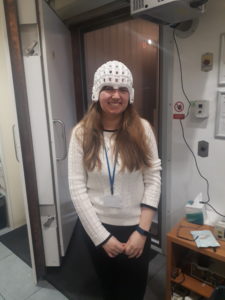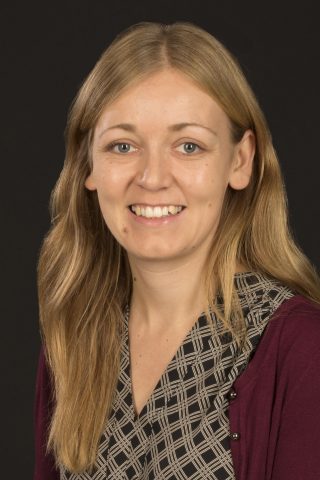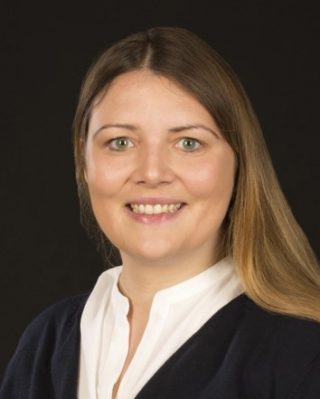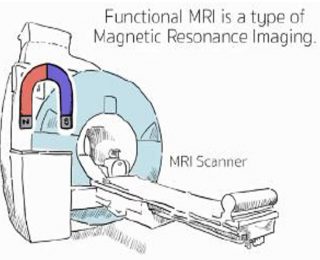Third annual Public Engagement Awards celebrate staff members’ exceptional commitment to public engagement at the Centre
Three awards have been presented at an online ceremony to recognise outstanding contributions to the strong culture of public engagement at the Wellcome Centre for Human Neuroimaging
Every year, the Centre joins together to celebrate the range of creative and thoughtful public engagement activities held over the past year. The awards ceremony, which was held online on Thursday 6th May, welcomed research and support staff from across the Centre – as well as external partners and collaborators from various public engagement projects.
The Public Engagement Awards support the Public Engagement Team’s strategy to develop a culture where public engagement is valued by staff and embedded into all research programmes. The initiative aims to recognise and reward outstanding achievements.
This year, the Public Engagement team were delighted to award four prizes to individual staff members and projects who have been especially instrumental in upholding the Centre’s commitment to excellence in public engagement.
The Rising Star Award went to Stephanie Mellor, for her work on engaging young people with epilepsy and their carers in the development of wearable optically pumped magnetoencephalography (OP-MEG) systems. Over the course of her PhD, Stephanie has run a number of workshops which will help shape the future of OP-MEG technology and ensure the wearable systems and scanning environments are friendly to people with complex needs and young people with epilepsy.

Upon winning, Stephanie said:
“I was really flattered to win the Rising Star Award, especially given the amazing nominees and excellent public engagement work done by the entire centre. I’ve learnt a lot from Cassie [Hugill, Public Engagement Manager] and the public engagement team and am enjoying putting it into practice. It has been a privilege to meet and talk to young people and children with epilepsy about our research and learn more about their needs and concerns. I’m really proud of my contribution to the OPM collaboration project and am excited to see how it develops.”
 The second prize to be announced was for Excellence in Public Engagement, which was awarded to Auditory Cognition researcher and Public Engagement Steering Committee member Dr Emma Holmes. The judging panel were impressed by Emma’s leadership and enthusiasm. This year, she led The Hearing Brain Project, which aimed to empower people with self-reported difficulty listening in noisy environments by improving their understanding of the Auditory Cognition team’s research and enabling them to contribute to studies.
The second prize to be announced was for Excellence in Public Engagement, which was awarded to Auditory Cognition researcher and Public Engagement Steering Committee member Dr Emma Holmes. The judging panel were impressed by Emma’s leadership and enthusiasm. This year, she led The Hearing Brain Project, which aimed to empower people with self-reported difficulty listening in noisy environments by improving their understanding of the Auditory Cognition team’s research and enabling them to contribute to studies.
Emma said:
“I’m delighted to have received this award and to have been involved in some fantastic public engagement work at the centre over the past few years. The Hearing Brain Project was a new venture into digital engagement for me, and I’ll definitely incorporate this type of engagement into my future work. Many thanks to the PE team for making this such a joy to be a part of!”

Before moving onto whole projects, the Awards celebrated one more individual with the Special Commendation Award. This year, Physics Team Research Fellow Dr Nadine Graedel was “delighted (and pleasantly surprised” to be chosen by the Public Engagement team.
“I learned a lot [about] public engagement in 2020 and I am very grateful for the opportunities and guidance that the PE team provided me with,” she said.
The final prize recognised Understanding MRI as this year’s Outstanding Public Engagement Project. Understanding MRI aims to alleviate the worries of members of the public who attend the Centre to partake in an MRI brain scan for research. It takes the form of a short, animated video which addresses the question “What is functional MRI?”. It is the product of a collaboration between scientific researchers, MRI study participants, and a freelance illustrator.

Nadine Graedel, who was also part of the Understanding MRI team, praised the interdisciplinary and collaborative nature of the project:
“The Understanding MRI project brought together physics, imaging support, the PLORAS, qMAP-PD and public engagement teams. Having all these different teams come together (virtually) allowed us to profit from our diverse and complimentary skills and expertise. A big thank you to the PE team for supporting us and for this award. We are looking forward to continuing this project!”